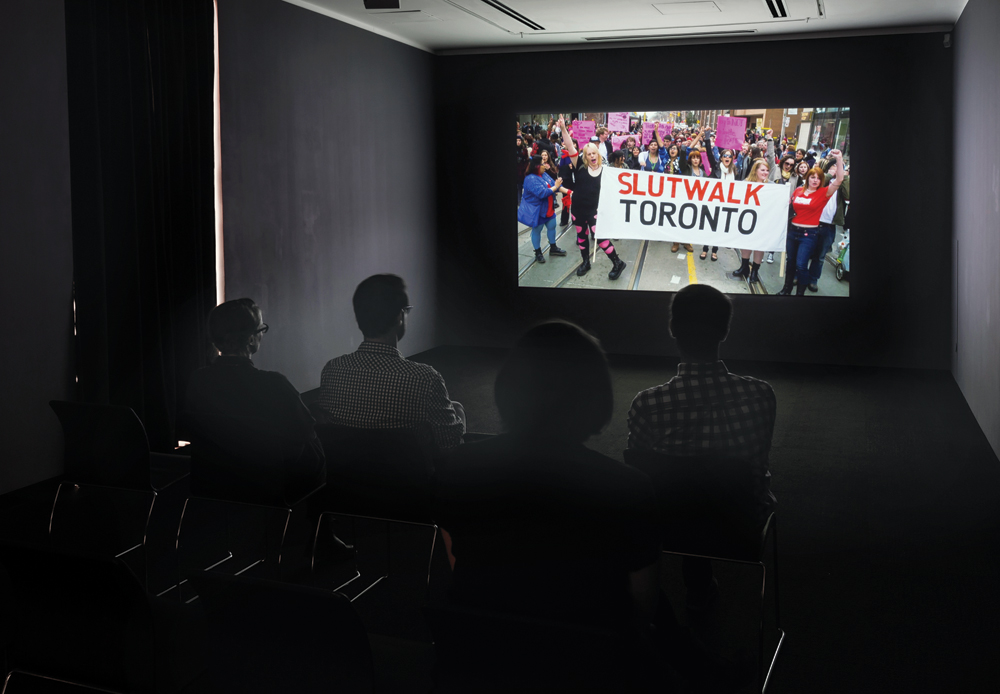This is an article from the Spring 2015 issue of Canadian Art.
“Wendy Coburn: Anatomy of a Protest” was an in-depth examination of footage from the 2011 SlutWalk in Toronto. The exhibition was a mixture of activist and artistic methodologies in a damning representation of tactics employed during the SlutWalk by provocateurs, which directly interfered with the protesters’ objective of seeking vindication for those who have suffered as a result of victim-blaming, slut-shaming and sexual profiling.
Wendy Coburn edited footage that she or her peers shot or found online, and this formed the video portion of the exhibition, titled Slut Nation: Anatomy of a Protest. The video observes the activities of people whom Coburn positions as provocateurs engaged in an act of public theatre. The stage was set in the public arena, and the media eagerly broadcasted the caricatured protesters who placed themselves at the very front of the SlutWalk. Due to their sensationalized personas, images of these protesters illustrated headline news on many major media outlets. Coburn narrates the video, and questions whether the clownish protesters might have connections with the police, due to the fact that the protest itself was a reaction against a statement made by a police officer. At a York University safety forum earlier that year, Constable Michael Sanguinetti reportedly stated, “Women should avoid dressing like sluts in order not to be victimized,” wrongly placing blame on victims rather than perpetrators. The officer later apologized in an email to the university.
In the video, we are asked to look at several distinct provocateur characters. They are clearly having a ball in contrast to rest of the protesters, who carry a much more serious countenance. At one point, Coburn draws attention to the placards held by the provocateurs, which feature confusing slogans such as “SLUTTY IS WHAT SLUTTY DOES,” “BIG SLUT AFTER-PARTY” and “S.L.U.T.=DIGNITY.” Coburn asks, who is supposed to understand this S.L.U.T. acronym? What does it mean? Perhaps it’s an inside joke we are not privy to. She then turns our attention to some of the other placards in the crowd, made by people whom Coburn positions as “real” protesters. Here we see a much more sombre outcry: “STOP SLUT SHAMING” and “I AM ASKING FOR IT: RESPECT!”
The exhibition also framed some key elements of the video. Coburn beautifully executed a series of photographs based on recreated provocateur costumes and props. There were reproductions of the “S.L.U.T.=DIGNITY” placard that featured various guesses as to what the acronym might stand for. The exhibition put modern protest under the microscope, raising questions about the effectiveness of tactics used by some protesters. Fortunately, if the aim of the provocateurs was to mock and discredit the SlutWalk, then they failed dismally. The protest moved on to other cities and is now an international movement.

 Wendy Coburn, Slut Nation: Anatomy of a Protest (installation view). Photo: Toni Hafkenscheid.
Wendy Coburn, Slut Nation: Anatomy of a Protest (installation view). Photo: Toni Hafkenscheid.







